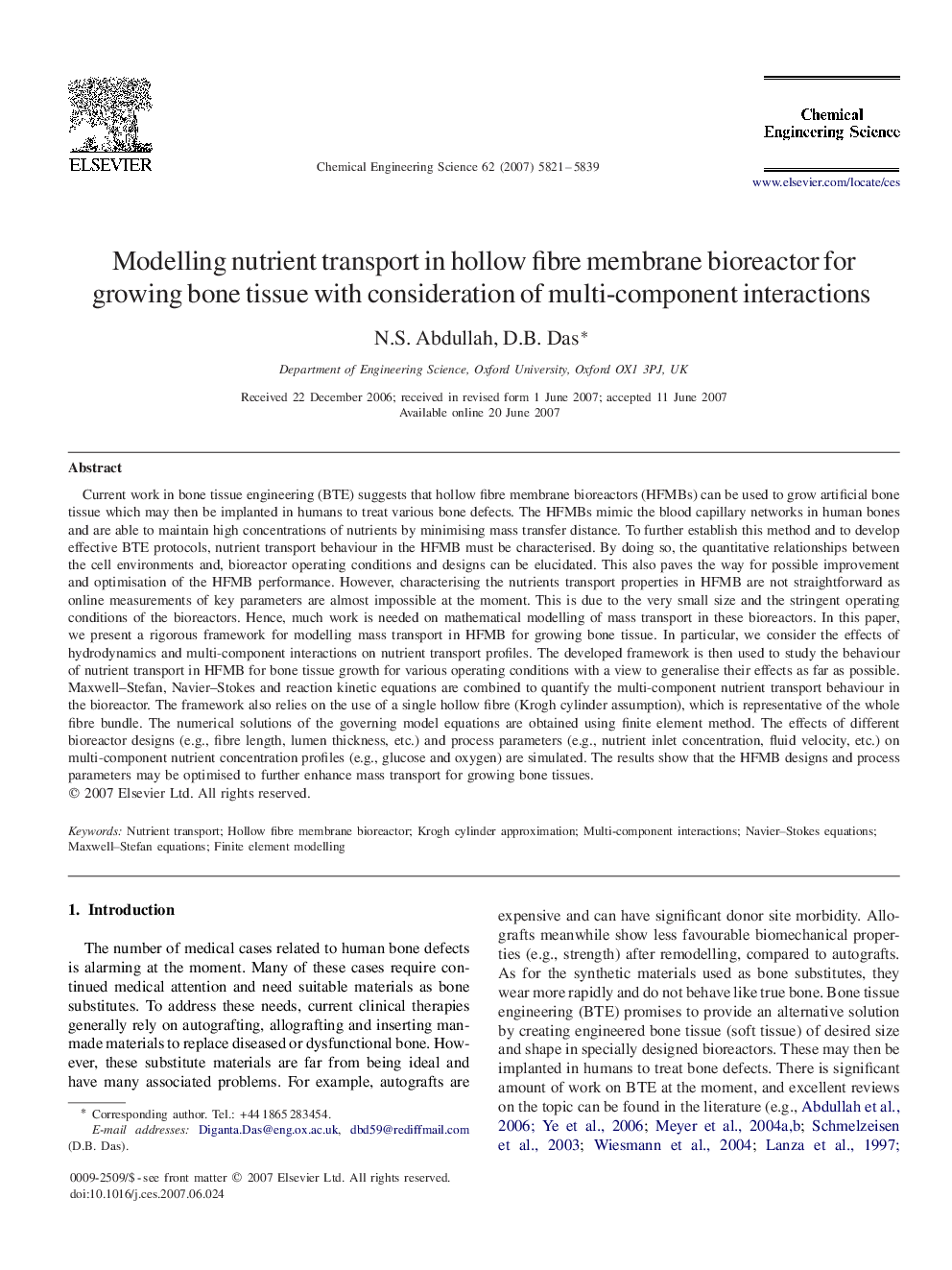| Article ID | Journal | Published Year | Pages | File Type |
|---|---|---|---|---|
| 159726 | Chemical Engineering Science | 2007 | 19 Pages |
Current work in bone tissue engineering (BTE) suggests that hollow fibre membrane bioreactors (HFMBs) can be used to grow artificial bone tissue which may then be implanted in humans to treat various bone defects. The HFMBs mimic the blood capillary networks in human bones and are able to maintain high concentrations of nutrients by minimising mass transfer distance. To further establish this method and to develop effective BTE protocols, nutrient transport behaviour in the HFMB must be characterised. By doing so, the quantitative relationships between the cell environments and, bioreactor operating conditions and designs can be elucidated. This also paves the way for possible improvement and optimisation of the HFMB performance. However, characterising the nutrients transport properties in HFMB are not straightforward as online measurements of key parameters are almost impossible at the moment. This is due to the very small size and the stringent operating conditions of the bioreactors. Hence, much work is needed on mathematical modelling of mass transport in these bioreactors. In this paper, we present a rigorous framework for modelling mass transport in HFMB for growing bone tissue. In particular, we consider the effects of hydrodynamics and multi-component interactions on nutrient transport profiles. The developed framework is then used to study the behaviour of nutrient transport in HFMB for bone tissue growth for various operating conditions with a view to generalise their effects as far as possible. Maxwell–Stefan, Navier–Stokes and reaction kinetic equations are combined to quantify the multi-component nutrient transport behaviour in the bioreactor. The framework also relies on the use of a single hollow fibre (Krogh cylinder assumption), which is representative of the whole fibre bundle. The numerical solutions of the governing model equations are obtained using finite element method. The effects of different bioreactor designs (e.g., fibre length, lumen thickness, etc.) and process parameters (e.g., nutrient inlet concentration, fluid velocity, etc.) on multi-component nutrient concentration profiles (e.g., glucose and oxygen) are simulated. The results show that the HFMB designs and process parameters may be optimised to further enhance mass transport for growing bone tissues.
